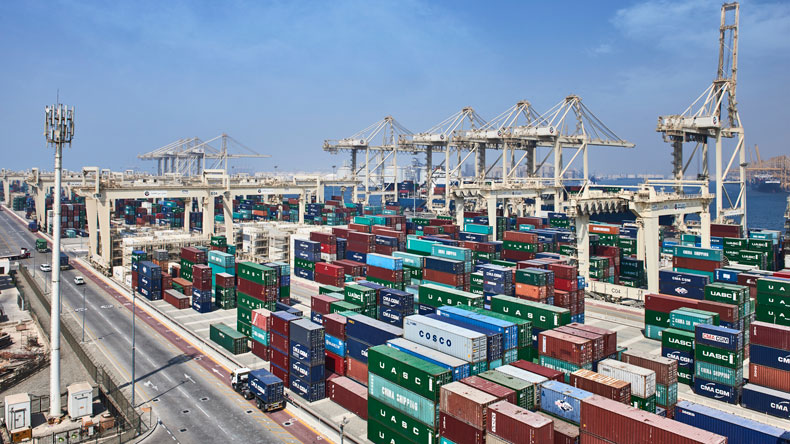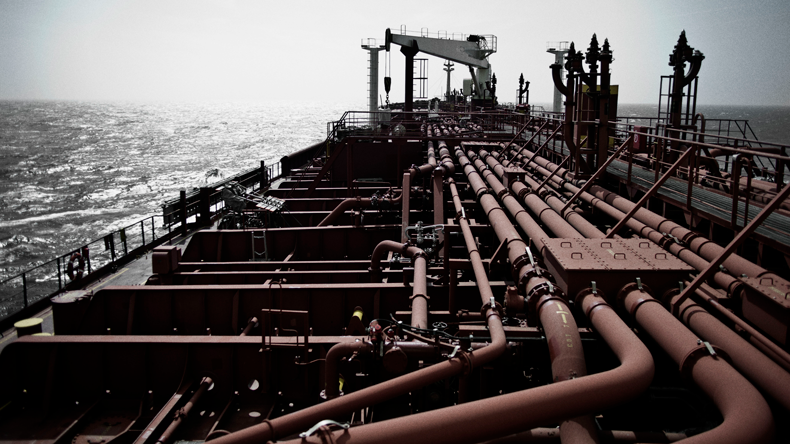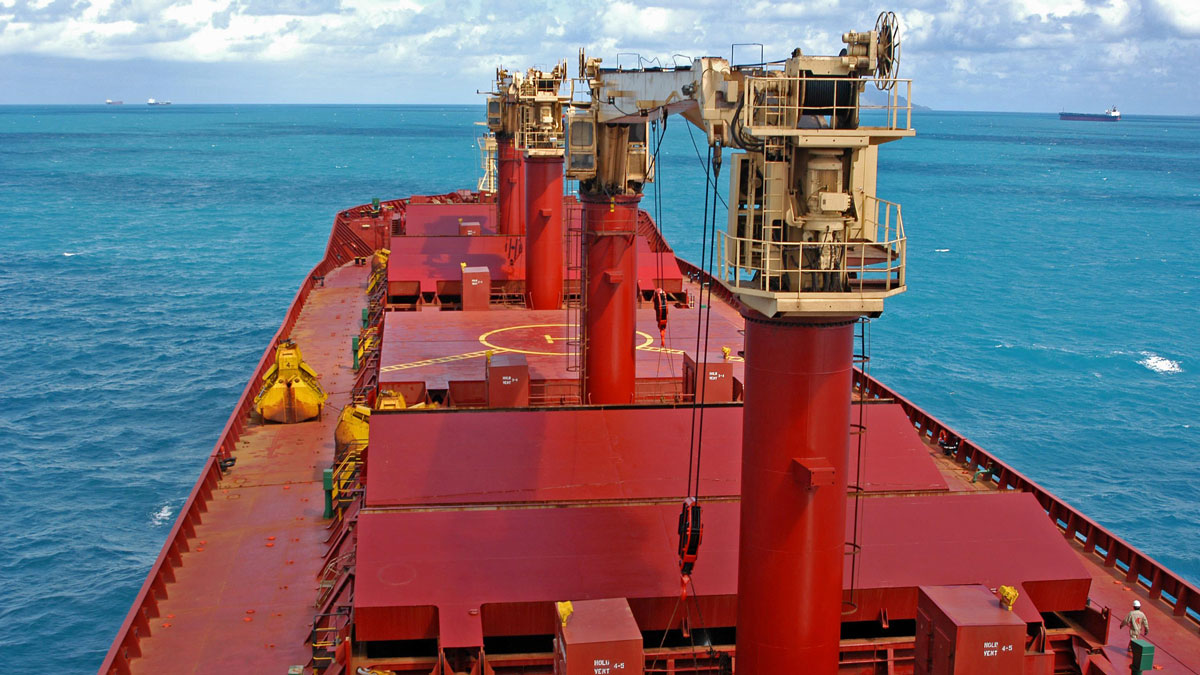Weekly briefing: Mixed signs for containers market, US gets new crude terminal
Signs that carriers are returning capacity to the containers market, Bahri reports record profits, miners release production reports
Poor box throughput figures at US west coast ports continued last month but there are signs carriers are gradually returning capacity to the market. Meanwhile, a tanker has loaded crude for the first time from a new terminal in Texas and it was a busy week for the dry bulk sector
THIS weekly briefing provides sector-by-sector coverage of the biggest news and analysis in shipping, direct from the Lloyd’s List team.
Follow the links within the text to the relevant news items in each market segment
Containers
On the downside, throughput figures from the major ports on the US west coast showed that volumes had been horrible again in June, wrapping up a second quarter that will be long remembered as one of the worst in container shipping’s history.
Import volumes were down 7% across California’s three major container hubs as cancelled sailings continued to reflect weak demand and Los Angeles chief executive Gene Seroka warned volumes could be down 15% across the year.
Kuehne + Nagel, the world’s largest logistics operator, also reported weak figures in the second quarter, with its ocean freight volumes slumping by over 10%, dragging on its revenues. It warned that the outlook remained uncertain for the rest of the year.
So too did Hapag-Lloyd chief executive Rolf Habben Jansen, although this caution was given in the context of a remarkably good second quarter for the German container carrier.
The company said it expects its result, which it will publish next month, will show an operating profit that has risen by 17% in the first six months of the year and it has extended its guidance for its full-year earnings.
This comes as carriers appear to be gradually returning capacity to the market, or at least no longer reducing it. There is some evidence that they are even expecting the emergence of peak season demand, as capacity on the transpacific trade is increased.
But any reintroduction of capacity in the market risks carriers losing the pricing power they have enjoyed during the pandemic crisis and which has seen them have one of their more profitable years at a time of record volume contraction.
The peak may already be over for idled capacity and it is likely that as demand returns and more capacity is added to the market, carriers will find it harder to balance the fine line that has propped up rates, which may well have seen their peak too.
Tankers
A tanker has loaded crude from the new South Texas Gateway Crude Export Terminal at Corpus Christi, Texas for the first time.
The terminal is one of two in the US Gulf now able to accommodate very large crude carriers.
The shipment on the 2007-built Aframax tanker Minerva Libra is also a further signal that shale exports from the US Gulf are facing fewer constraints than Middle East Gulf producers, even as production (excluding Alaska) dipped 15.5% since February.
Minerva Libra was chartered by ExxonMobil to ship the 70,000-tonne cargo to northwest Europe, which along with China, is now one of the biggest buyers of the light, sweet shale oil.
In Saudi Arabia, state-owned tanker company Bahri has posted a record second quarter net profit, up 1,569% from the same period last year. Total revenue rose 145%.
The performance was “powered mainly by the growth in the oil sector due to the rise of transportation rates in addition to the increase in the number of voyages during the second quarter of the year,” the company said in an exchange statement.
Bahri, which has a fleet of 41 VLCC, 34 chemical and product tankers as well as dry bulk and multipurpose vessels, was a major charterer of tankers in the late-first and early second quarter of 2020 when Saudi Arabia flooded the market with oil as part of a price war before agreeing to historic cuts.
Euronav, meanwhile, is buying back more stock as it seeks to create value in the absence of support in public markets.
The Hugo De Stoop-led tanker company has spent $37.3m in share buybacks since the end of June, the company disclosed. It brings its holding to 4.26% of the outstanding share count.
The firm, which trades on both the New York Stock Exchange and the Brussels Stock Exchange, had said on July 9 that shareholders had authorised it to buy up to 10% of the company.
In China, Cosco Shipping Energy Transportation has established a tanker subsidiary in Hainan, an island province that China aims to develop into the country’s largest free trade port.
The Shanghai-listed company, the oil and gas shipping arm of state conglomerate China Cosco Shipping Corp, will also hand over the ownership of nine tankers under construction — four very large crude carriers, three suezmaxes and two aframaxes — to the subsidiary, according to an exchange filing.
The move marks an important step by the state-owned giant in facilitating the national maritime strategy, the filing said, adding the new tonnage will be registered under the Port of Yangpu in Hainan.
Finally, Korea Shipbuilding & Offshore Engineering, formally known as Hyundai Heavy Industries, has announced Won173bn ($143.6m) of orders for four medium range chemical tankers from two buyers.
Two of the 50,000 dwt vessels were contracted with an Asian owner for a total of Won87bn, said the Seoul-listed shipbuilder.
The deals offer some timely support to the South Korean shipbuilding group amid a severe order drought.
Dry Bulk
It has been a busy week for the dry bulk sector, with major miners issuing their production reports.
First up was Anglo American, which cut its coal export volumes guidance for the full-year based on coronavirus restrictions as well as in response to lower demand. Thermal coal output was cut by 1m tonnes to 21m tonnes on lower output in South Africa and Colombia, while metallurgical coal from Australia would face a steeper drop due to two incidents at mines there.
Its iron ore guidance was unchanged at 37m to 39m tonnes from its Kumba mining complex in South Africa, and 22m to 24m tonnes for its share from Minas Rio in Brazil.
Rio Tinto was next up, expecting to ship 324m to 334m tonnes of iron ore from its Pilbara operations in Western Australia, compared with 327m tonnes in 2019. It said it saw demand recovering in China as the construction and infrastructure sectors performed well in response to government stimulus.
The country’s copper concentrate market also remained favourable. But, a second wave of infections remained a risk factor in advanced economies.
BHP reported a 4% rise in iron ore production to 248m tonnes during its financial year which ended in June, and anticipates a range of 244m tonnes to 253m tonnes in the next 12 months. Coal volumes declined as a result of a deteriorating market outlook.
Brazil’s mining giant Vale meanwhile reiterated its full-year guidance range of between 310m to 330m tonnes, although admitted that the lower end of the range was likely. That means it will have to produce at least 90m tonnes per quarter to meet that target. While the news seems supportive for dry bulk shipping, some analysts fear that the target is not achievable given Vale’s track record.
The capesize market continued to ease from last week with small rises in between. Fundamentals hadn’t really improved and the average weighted time-charter closed Tuesday at $22,635 per day from $25,562 a week ago and $30,939 at the start of the month.
Meanwhile, Castor Maritime raised even more funds as it seeks opportunities to grow its fleet.



